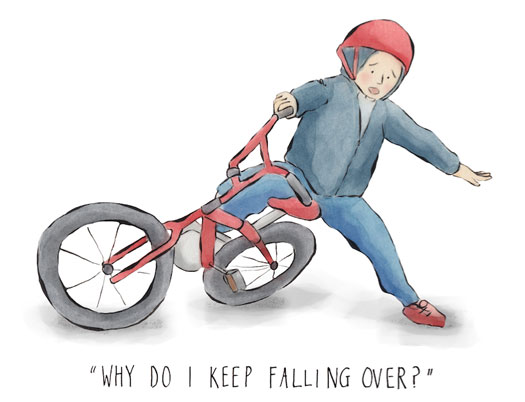Conditions
Dyspraxia / Motor Co-ordination Difficulties
Definition:
The exact cause is not fully understood but it is thought to be underpinned by poor or slow development of those areas of the brain involved in performing sequences of co-ordinated muscle movements: the Cerebellum, Brain Stem, Motor Cortex and the Pre Frontal Cortex. Often these problems are accompanied by difficulties in visual perception and speech. Just as there is no single set of signs that characterises dyspraxia, there is not thought to be one single cause of dyspraxia but a number of factors. Dyspraxia is not linked to the general level of intelligence of the child and boys are four times more likely to be affected than girls.
Difficulties the child may experience:
Dyspraxia and Motor Co-ordination difficulties can take many forms and symptoms can be wide ranging. Affected children can appear “clumsy” and have difficulty in developing skilled motor movements. They may have difficulty understanding how to direct their body to do movements or in understanding what is actually being asked of them. As a result these children find it difficult to express their learning through movement, of which handwriting is a prime activity. Putting things down on paper and organising themselves and their thoughts can be challenging. Skills in many areas vital for day to day functioning can be affected and children can find themselves struggling to become more independent in activities of daily living, play and academic skills. These children do not have a learning disability but they can struggle to show their learning and, if left unchecked, can form a group of children who struggle to meet their potential at school. This can lead to affected children avoiding certain activities, due to a ‘fear of failure’, upset and frustration for both them and their parents/teachers.
Aims of therapy:
Therapy would aim to improve a child’s ability to:
- Access automatic and fluid movements so accurate motor planning can be established for different activities, including handwriting.
- Learning to ‘read’ and control the body gives confidence and motivation back to ‘have a go’ and not fear ‘failure’. This in turn leads to more achievement.
- Be more independent and master daily living skills.
- Understand their body and how to control and coordinate it better.
- Develop organisational skills.
- Improve academic skills.
- Improve thought to paper skills.
- Develop control of gross motor skills and enhance performance in sporting activities.
- Reach developmental milestone similar to their peer group.
- Develop fine motor skills for activities such as handwriting and cutlery skills.

Hemispheres Approach:
At Hemispheres we can provide specific and specialised movements which have been purposefully developed to mature and improve the connectivity and functioning of the whole brain, targeting the specific neural structures responsible for motor planning, including the Cerebellum, Brain Stem, Motor and Pre Frontal Cortex. Greater organisation in these areas of the brain eases up the ‘pressure’ on the thinking centres, thereby helping a child to find learning easier and less tiring. The main form of therapy utilises a daily motor programme, however, children with this diagnosis often benefit from participating in the Hemispheres Handwriting™ or Developmental Assessment™ (depending on their age) also. This means specific support can be directed towards areas of difficulty.
Average duration of therapy:
On average our therapy can vary between 3-12 months depending on the child’s co-ordination difficulties. Motor co-ordination difficulties currently make up 17% of the Hemispheres case load, however, this population of children are most typically referred for handwriting difficulties - an area that makes up an additional 29% of the children being seen by Hemispheres.
Copyright © 2025 | Privacy Policy


